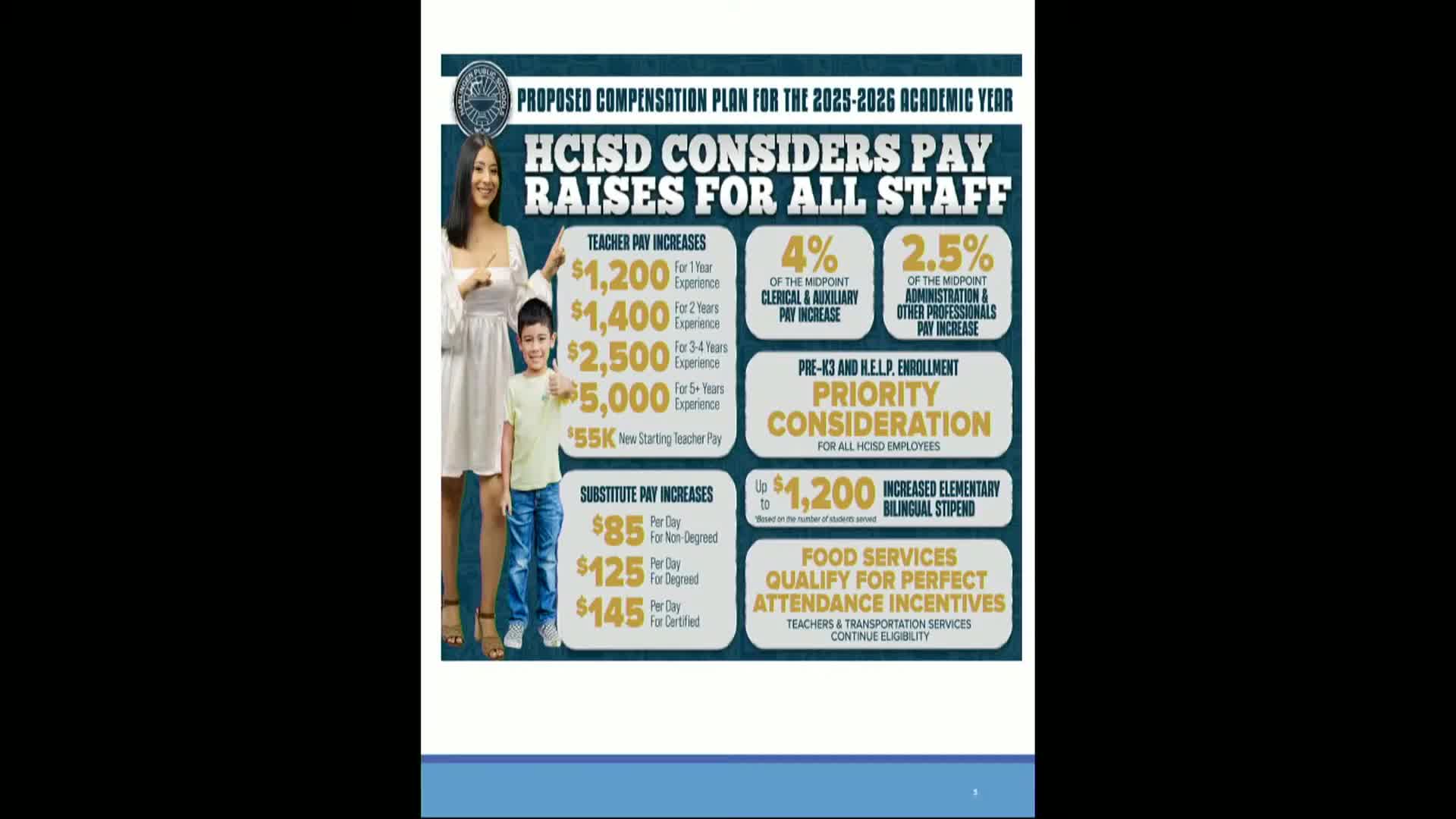HDISD proposes $222.9M budget for 2025 including staff benefits and safety projects
June 26, 2025 | HARLINGEN CISD, School Districts, Texas
This article was created by AI summarizing key points discussed. AI makes mistakes, so for full details and context, please refer to the video of the full meeting. Please report any errors so we can fix them. Report an error »

In a recent special board meeting held by Harlingen Consolidated Independent School District (HCISD) on June 25, 2025, key budget proposals for the upcoming school year were discussed, highlighting significant changes and initiatives aimed at enhancing staff benefits and educational services.
One of the most notable proposals includes the introduction of a perfect attendance incentive for food service staff, aligning them with existing incentives for teachers and transportation personnel. Additionally, the district plans to offer priority enrollment in the Pre-K 3 program for staff members' children, alongside priority access to the after-school care program. These initiatives reflect HCISD's commitment to supporting its employees and fostering a positive work environment.
The budget for the 2025-2026 school year is projected at $222.9 million, with a substantial portion allocated to payroll, which accounts for approximately 75% of total expenditures. This budget includes significant investments in maintenance and safety, with $5.2 million earmarked for various maintenance projects and $400,000 for safety and security enhancements across district facilities.
A detailed breakdown of the budget revealed a decrease in property tax revenue, projected at $43.8 million, down from $50.6 million the previous year. This reduction is attributed to an overestimation in the prior year's budget. However, state revenues are expected to rise significantly, with a proposed $143.3 million, reflecting an increase of $16 million compared to the previous year. This increase is partly due to new funding allotments aimed at teacher retention and support staff.
The meeting also addressed the impact of changes in the state's Medicaid program, known as SHARS, which provides funding for special education services. The district anticipates a 50% decrease in federal funding related to this program, prompting adjustments in the budget to align with expected revenue changes.
Overall, the proposed budget reflects HCISD's strategic focus on enhancing educational services, supporting staff, and maintaining infrastructure, while navigating the challenges posed by fluctuating state and federal funding. The board's discussions set the stage for a comprehensive approach to meet the needs of students and staff in the upcoming school year.
One of the most notable proposals includes the introduction of a perfect attendance incentive for food service staff, aligning them with existing incentives for teachers and transportation personnel. Additionally, the district plans to offer priority enrollment in the Pre-K 3 program for staff members' children, alongside priority access to the after-school care program. These initiatives reflect HCISD's commitment to supporting its employees and fostering a positive work environment.
The budget for the 2025-2026 school year is projected at $222.9 million, with a substantial portion allocated to payroll, which accounts for approximately 75% of total expenditures. This budget includes significant investments in maintenance and safety, with $5.2 million earmarked for various maintenance projects and $400,000 for safety and security enhancements across district facilities.
A detailed breakdown of the budget revealed a decrease in property tax revenue, projected at $43.8 million, down from $50.6 million the previous year. This reduction is attributed to an overestimation in the prior year's budget. However, state revenues are expected to rise significantly, with a proposed $143.3 million, reflecting an increase of $16 million compared to the previous year. This increase is partly due to new funding allotments aimed at teacher retention and support staff.
The meeting also addressed the impact of changes in the state's Medicaid program, known as SHARS, which provides funding for special education services. The district anticipates a 50% decrease in federal funding related to this program, prompting adjustments in the budget to align with expected revenue changes.
Overall, the proposed budget reflects HCISD's strategic focus on enhancing educational services, supporting staff, and maintaining infrastructure, while navigating the challenges posed by fluctuating state and federal funding. The board's discussions set the stage for a comprehensive approach to meet the needs of students and staff in the upcoming school year.
View full meeting
This article is based on a recent meeting—watch the full video and explore the complete transcript for deeper insights into the discussion.
View full meeting
